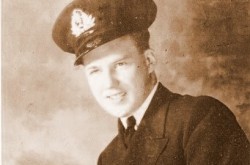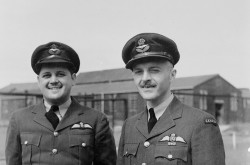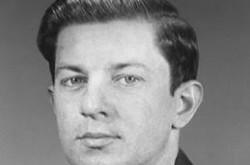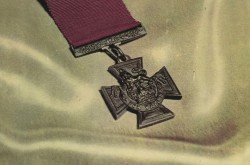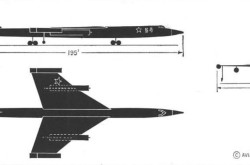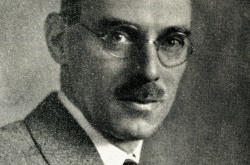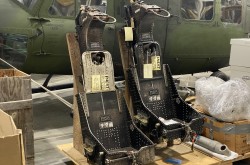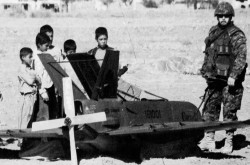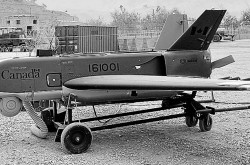Honouring the brave: Alan Arnett McLeod was Canada’s youngest Victoria Cross recipient
While Alan Arnett McLeod was Canada’s youngest recipient of the Victoria Cross, that’s just one of the facts that make him such an interesting historical figure.
Although his story may not be as well known as some of the other Canadian airmen who flew during the First World War — like William Avery “Billy” Bishop — McLeod's story is no less inspiring.
Born in the small town of Stonewall, Manitoba on April 20, 1899, McLeod is remembered as being a typical young man of his generation. At the beginning of the First World War in 1914, when many other young men were volunteering to go fight, McLeod — although willing — was barred from joining the conflict due to his age.
Despite the barrier his age caused, ever persistent, he went on and tried to enlist in the Royal Flying Corps (RFC). Still too young, McLeod was turned away and told to come back when he turned 18, which would be in 1917. Of course, that is exactly what he did; on April 20, 1917 — the day of his eighteenth birthday — McLeod caught a train from Winnipeg to Toronto, where he began training to join the RFC overseas.
A window into McLeod’s life
It was at about this time that McLeod started writing lengthy letters back home to his parents. Noted Canadian author Carl Christie, who wrote a story published in the Canadian Aviation and Historical Society Journal, remarks that these letters offer an in-depth look into the teenage mind of McLeod’s generation. It was through these letters to his parents that most of McLeod’s story has been pieced together.
As part of his military training at this time, McLeod was learning about aircraft and how to fly them. In one letter, he describes how his experience with car engines isn’t doing him very much good when it comes to learning about aircraft engines.
McLeod spent four months training; during this time he logged about 50 hours of solo flight time. After his training was complete — shortly after his eighteenth birthday — McLeod was off to the U.K for a short while before being transferred to mainland Europe.
He first had an opportunity to show off all that he had learned in training when he was stationed in Hesdigneul-lès-Béthune, France. While stationed there, McLeod was with the No. 2 Squadron, flying an Armstrong Whitworth F.K.8.
In another letter sent to his parents, he noted that at this time he was very close to the front lines, and could hear gunfire. McLeod had his first taste of aerial combat on Dec. 19, 1917, when he engaged in a dogfight with eight German fighter planes.

McLeod is shown here in the Canadian Daily Record, a newspaper published by the Canadian War Records Office meant to show Canadian soldiers abroad what was going on at home.
A true act of courage
It was a few months after this incident that McLeod — who at the time was a Second Lieutenant — truly showed what he was made of. Flying with observer Lt. Arthur Hammond during the Spring Offensive, McLeod spotted a Fokker Dr. I — just as they were about to drop their bombs. As Hammond shot at and severely damaged the Fokker, seven more German aircraft appeared. McLeod and Hammond soon became embroiled in a very unevenly matched dogfight.
Hammond was able to get enough shots off to damage three more triplanes, but it wasn't long until their F.K. 8 aircraft was riddled with bullets from the six remaining enemies. Part of the fuselage burst into flames when the fuel tank was hit by enemy gunfire, which was located right in front of the cockpit.
No Allied aircrews had parachutes during the First World War, so McLeod and Hammond had to fly the plane all the way to the ground, from a height estimated at somewhere between 2,000 and 6,000 ft. During the attack, McLeod was hit five times in the neck and heel. In another excerpt from the story written by Carl Christie, Hammond is on record describing the incident; the excerpt originally came from a letter Hammond wrote to McLeod’s mother in 1920:
“...During this time we were side slipping and Alan was standing up with one foot on the rudder bar and the other outside on the wing and I was standing on the bracing wires at the side of the fuselage as the bottom of my cockpit had fallen out and as we neared the ground I climbed out on the top wing so that when we hit the ground I was thrown forward on the ground. I saw Alan jump out of the machine and look for me but he evidently thought that I had fallen out.”
It was for this heroic act that McLeod was awarded the Victoria Cross, and had his name etched in history as the youngest Canadian to ever receive the honour. After receiving the Victoria Cross, McLeod’s story takes a turn for the worse.
After recovering from the injuries sustained in the battle, McLeod contracted influenza at the age of 19. He passed away on Nov. 6, 1918. Although his career as an airman was short, McLeod’s exceptional bravery ensures that he will always have a place in history as one of the greatest Canadian airmen.

McLeod is pictured here looking quite sickly. This photo was taken at his Victoria Cross recipient ceremony, near the end of 1918.





